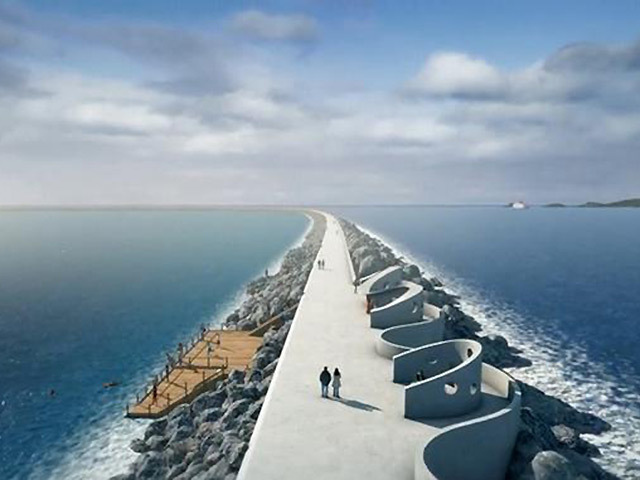
The development of three tidal lagoons by 2021 could deliver large-scale clean energy at a significantly lower cost than offshore wind, a study suggests.
The average cost of power from three lagoons in operation by early in the next decade would be around £100 per megawatt hour (MWh) over their lifetime, according to the research by energy economists at management consultancy Poyry.
The cost is lower than the Government’s central assumption of £131 per MWh for offshore wind in 2021, the report said.
The lagoons, which generate renewable energy by capturing and releasing tidal water through turbines, would become cheaper as larger projects are developed, it suggests.
The third lagoon would generate power at a cost of around £90 per MWh, which the study said was broadly similar to onshore wind, nuclear and gas-fired generation.
Energy company Tidal Lagoon Power has submitted plans for the world’s first tidal lagoon power plant at Swansea Bay, which it hopes to start building next year and generating power by 2018.
The project, like all forms of low carbon generation, will require Government support through a guaranteed price for its electricity, known as the “strike price”.
The research by Poyry for the company found that the first scheme, which aims to prove the lagoon concept, would require a strike price of £168 MWh, more expensive than the £140 required for offshore wind projects in 2018/19.
But it found that developing two more projects at larger sites with higher tidal range would be cheaper.
A second lagoon would require a strike price of £120 MWh in 2020, making it cost competitive with offshore wind, and the third lagoon would need support of £92 MWh.
Because the lagoons are expected to generate electricity for 120 years, they will continue to produce low-carbon power long after the Government support ends, making them relatively cheaper compared to more short-lived power schemes.
Tidal Lagoon Power plans to build a series of lagoons around the UK coast to harness tidal energy.
The second and third lagoon have been taken from their pipeline of developments but the company has not named where they would be.
Mark Shorrock, Tidal Lagoon Power chief executive, said: “This study clearly demonstrates that tidal lagoons can rapidly become one of the cheapest sources of electricity in the UK.
“The more water we impound, the more power we produce, the less support we require. It really is that simple.
“And with an operating life of over 120 years, tidal lagoons offer future generations even lower cost electricity following their 35 year period of strike price support.”
Recommended for you
